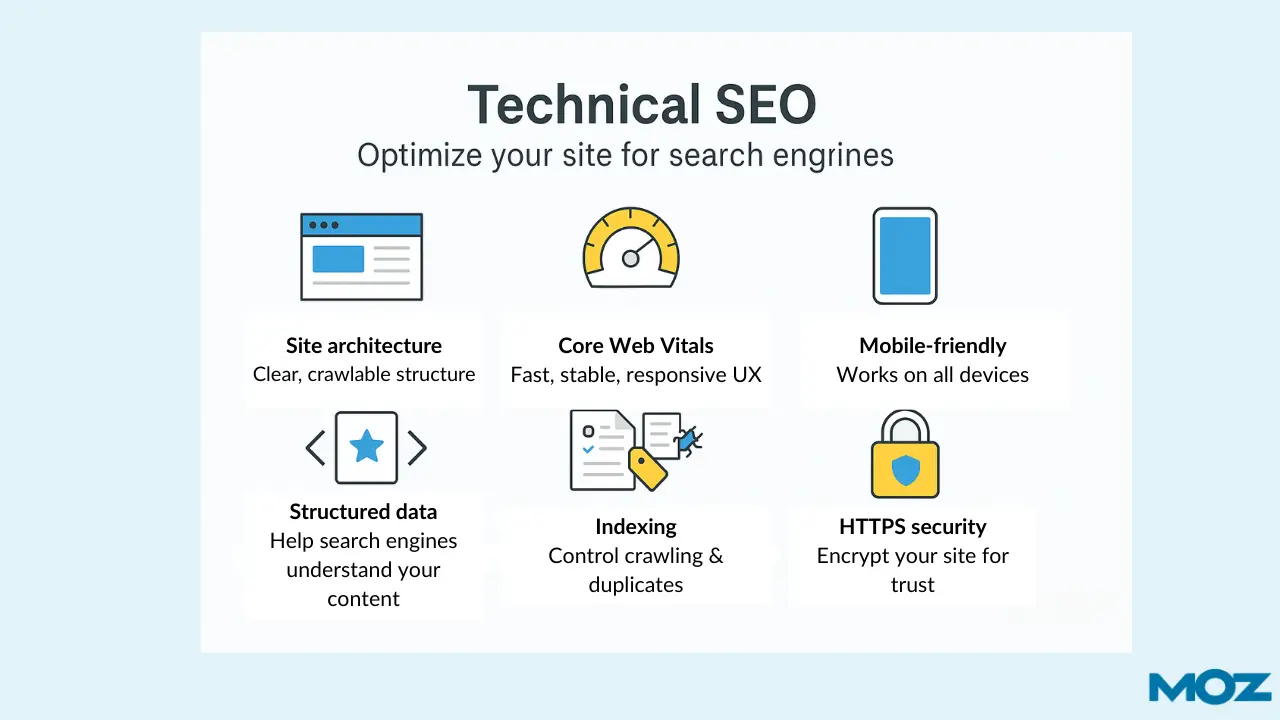Ahrefs SEO Tool: A Real Talk Guide
The SEO world is changing fast, especially with AI-driven search rising. Marketers must understand which tools actually move the needle in 2025 and beyond. Ahrefs is one of those tools powerful, reliable, and constantly evolving.This guide explains how to use Ahrefs to survive content saturation, algorithm shifts, and AI-driven SERPs. You’ll learn how to apply its features strategically to rank higher and futureproof your site. Why Ahrefs Matters More in the Age of AI Search Ahrefs is more than a backlink checker. It’s a complete SEO intelligence platform.With AI search engines reshaping results, data-driven strategies are vital. What It Is Ahrefs collects and analyzes web data from billions of pages.It offers backlink tracking, keyword research, site audits, rank tracking, and competitor insights. Why It Matters AI search tools like ChatGPT and Perplexity now answer questions directly.This reduces organic clicks, so SEO must focus on brand visibility and authority.Ahrefs helps measure and build that authority with concrete data. How to Apply It Pro Tip: Treat Ahrefs like a decision engine, not just a reporting tool. Use the data to guide strategy, not just track progress. Understanding Content Saturation and AI Overuse The web is flooded with similar AI-written content.This makes standing out harder than ever. What It Is Content saturation happens when too many similar pages target the same keywords.AI tools accelerate this by mass-producing generic articles. Why It Matters Google now demotes unoriginal content through its Helpful Content system (now part of its core algorithm).AI-driven search engines also prefer authoritative, unique voices. How to Apply It Example: If 2,000 articles exist on “best running shoes,” find a gap like “best running shoes for flat feet in humid climates.” Bonus Tip: Add personal or client case studies to stand out in saturated niches. Tracking Engagement Metrics with Ahrefs User engagement is a rising ranking signal.Google and AI search both prioritize satisfying content. What It Is Engagement metrics include CTR (click-through rate), dwell time, and pogo-sticking (users bouncing back quickly). Why It Matters How to Apply It Pro Tip: Add jump links or a table of contents to increase dwell time by improving navigation. Avoiding Over-Optimization Risks Over-optimization can silently kill rankings.Many sites still fall into this trap. What It Is Over-optimization includes keyword stuffing, excessive internal links, or unnatural anchor text. Why It Matters Google’s core algorithm penalizes over-optimized content.AI-driven systems may classify it as spammy or low-trust. How to Apply It Example: If you always link as “best SEO tool,” alternate with natural phrases like “SEO resources” or “Ahrefs platform.” Bonus Tip: Refresh old posts to rebalance keyword usage without deleting them. Navigating AI-Driven SERPs and Zero-Click Searches Zero-click searches are rising rapidly.Users get answers directly from AI summaries and featured snippets. What It Is AI-driven SERPs display instant answers without requiring a click.Think of Google SGE, ChatGPT search answers, and Perplexity responses. Why It Matters This trend reduces organic traffic.Your content must earn visibility inside these AI answers. How to Apply It Pro Tip: Use concise answers (40–60 words) in your content to capture featured snippets. Meeting YMYL Standards with EEAT YMYL (Your Money, Your Life) content faces stricter standards.This includes finance, health, legal, and safety topics. What It Is EEAT stands for Expertise, Experience, Authority, and Trust.Google uses it heavily to assess YMYL pages. Why It Matters Without EEAT, YMYL pages won’t rank well in Google or appear in AI summaries. How to Apply It Example: A finance blog can cite its writer’s CFA certification and link to interviews or press mentions. Bonus Tip: Publish transparent editorial policies and reference sources to boost trust. Building Site Reputation and Link Quality with Ahrefs Links remain one of the strongest ranking factors.But quality matters more than quantity. What It Is Ahrefs’ Site Explorer reveals your backlink profile and competitors’ link sources.It measures link quality via metrics like Domain Rating (DR). Why It Matters High-authority links boost your reputation.They also signal trust to AI-driven search tools. How to Apply It Table: Link-Building Tactics Comparison Tactic Difficulty ROI Risk Guest posting Medium High Low Broken link building Medium Medium Low Buying links Easy High short-term High (penalties) Directory submissions Easy Low Low Pro Tip: Build links gradually. Sudden spikes can trigger algorithmic suspicion. Cutting Weak or Thin Content Thin content drags down your whole site.Even strong pages can suffer from it. What It Is Thin content is shallow, outdated, or low-value content.It often has little traffic or backlinks. Why It Matters Google’s Helpful Content system can lower your entire site if it detects too much thin content.AI search also ignores low-value pages entirely. How to Apply It Example: Merge five short blog posts on similar topics into one in-depth resource. Bonus Tip: Redirect deleted pages to stronger related pages to preserve link equity. Improving UX Metrics UX directly affects rankings and AI visibility.Poor usability increases bounce rates and reduces trust. What It Is UX includes site speed, mobile responsiveness, and navigation clarity.Ahrefs integrates with Core Web Vitals via its Site Audit tool. Why It Matters Fast, usable pages keep users engaged.This raises dwell time and sends positive signals to search engines. How to Apply It Pro Tip: Use fewer plugins or scripts. Each one slows pages down and hurts engagement. Building Topical Depth and Expertise Search engines now favor topical authority.Single-topic expertise beats generalist sites. What It Is Topical depth means covering a subject comprehensively.Ahrefs can reveal content gaps and related subtopics. Why It Matters Google clusters content by topic to assess expertise.AI search engines do the same when sourcing answers. How to Apply It Example: A fitness site builds a “strength training” hub with 20+ supporting articles. Bonus Tip: Use internal links to show your site’s structure to crawlers clearly. Diversifying Traffic Channels Depending only on Google is risky.Algorithm shifts can crush rankings overnight. What It Is Diversification means using multiple traffic sources beyond organic search.This includes email, social media, and referral partnerships. Why It Matters It protects your site from SEO volatility.It also expands brand reach for AI-driven mentions.
Read More














